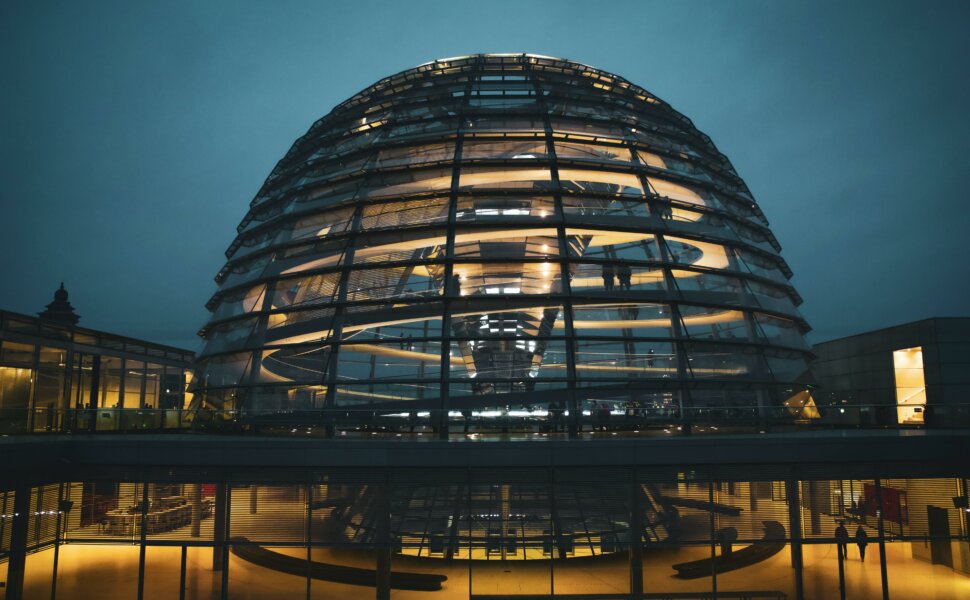Relevant to students of: The German Empire, Weimar Germany, Nazi Germany, Hitler’s Rise to Power, modern German politics.
The Reichstag is the meeting place for the lower house of Germany’s national legislature- similar to the British House of Commons. The election of the President of Germany also takes place here. The original Reichstag was completed in 1894, allowing it to witness the German Empire and the Weimar Republic. It was destroyed on 27 January 1933, in the infamous Reichstag fire that gripped the Reichstag building just one month after Hitler became chancellor. While the Nazis accused the Communists of destroying a democratic symbol, and rolled out emergency measures that put Hitler on the path to dictatorship, much evidence points to the Nazis’ own hand in the arson. The Reichstag building did not reopen and attempts to have a sitting elected legislature were quickly quashed by Hitler. The building suffered from Allied bombing in World War Two and it was not until after German reunification in 1990 that the building had extensive restoration and was brought back into use. During the Cold War, neither West Germany nor East Germany could make use of the Reichstag building: Its location in Berlin put the Reichstag in a Communist-surrounded area, while the Soviet’s could not make use of Western Berlin which was held by the Allies.
A large glass dome now sits atop the Reichstag building with a spiral ramp leading to the top. Visitors to the dome have a 360° degree view of Berlin. Its futuristic appearance and transparency are symbolic. Firstly, the transparency shows a move away from the closed-door politics of Nazism and demonstrates that the people are both literally and figuratively ‘above’ the government which acts on their behalf. Secondly, it demonstrates Germany’s commitment to renewable energy: Natural light fills the chamber reducing carbon emissions from artificial lighting; there are solar panels, biofuel generators and an electronic sun shield which moves with the sun.

